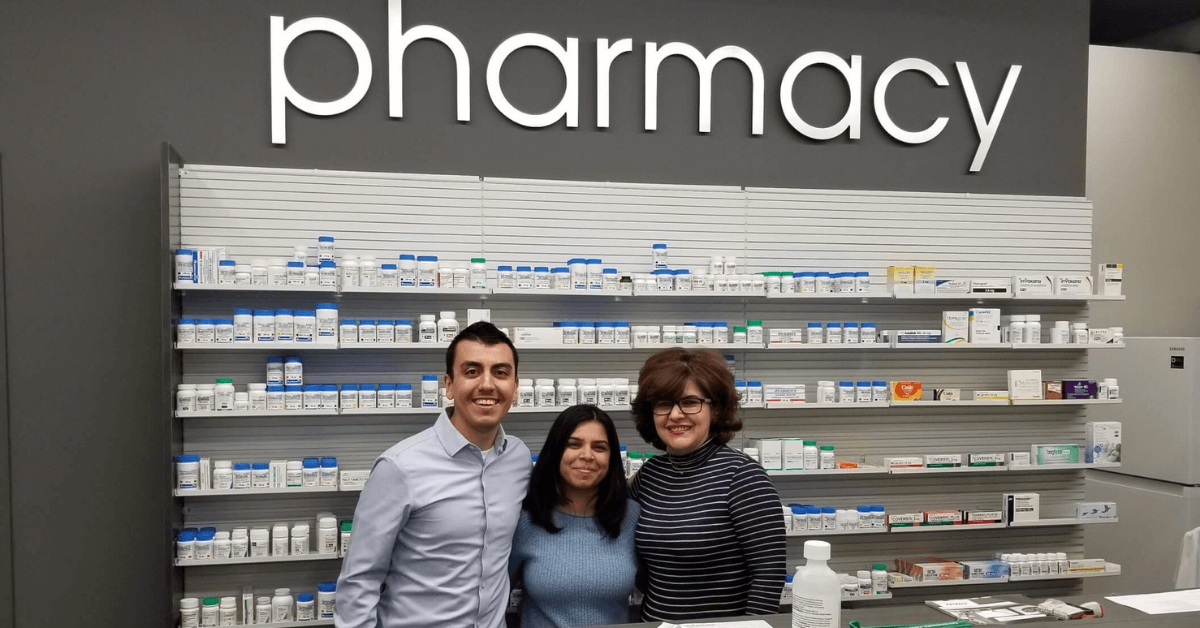Are you a pharmacy owner and want to save $425,449 in tax?
Today, we will discuss 3 common needs of pharmacy owners and how one solution can satisfy these needs simultaneously.
Here is how you will benefit:
- Get $997,909 more to fund your pharmacy
- Receive $275,620 more in retirement income
- Save you $425,449 in tax over time
All tax strategies we publish are 100% legally allowable by the CRA; no shady business.
Don’t want to read the entire blog post?
Then schedule a free strategy session and let’s chat to see if this strategy makes sense for you and your pharmacy.
3 Common Needs of Pharmacy Owners
Pharmacy owners usually fall into one of three categories:
- One pharmacy, one operator
- One pharmacy, business partner(s)
- Multiple pharmacies, multiple business partner(s)

Regardless of what category you fall in, each of you have 3 common needs:
- Keep the pharmacy running in event of your death or sickness (Key Person)
- Buyout a business partner’s shares in event of death or sickness (Buy/Sell)
- Want to cut down or fully stop working in your 50’s or 60’s (Retirement)
And there are 3 ways to fund these:
- Personal and/or corporate savings
- Bank loans
- Insurance
What’s the cheapest way to fund these 3 needs simultaneously?
The answer is insurance!
A lot of people hate paying for insurance premiums but it’s actually the cheapest way and, if done right, you can:
- Get $997,909 more to help fund your pharmacy
- Receive $275,620 more in retirement income
- Save you $425,449 in tax over time
And with the latest 2019 tax changes, insurance solutions are now more relevant than ever for pharmacy owners.
So if you want to save $425K+ in tax, read the rest of this blog post as we’re going to use a real life example.
How to Get $997,909 More Money
We’re going to use a real life example:
- One pharmacy, two operators
- Ages 42 and 43
- Pharmacy value = $2,000,000
- Want to semi-retire in their early 50’s without selling their pharmacy
- Don’t see themselves doing absolutely nothing, so won’t sell their pharmacy for 20 years
They want to plan for the following:
- Hire another pharmacist and absorb any revenue shortfall if one partner dies and patients start leaving
- If the other partner dies, have $1M to buyout other partner’s share of the pharmacy
- Save for retirement because most of their wealth is tied up in their pharmacy
So let’s compare two ways to save up $1M:
- Corporate savings
- Life insurance on each partner
A bank loan is also way but it’s the most expensive form since you have to pay interest every year, so let’s leave it out of the analysis.
Assumptions:
- Invest $19,335 for 20 years
- Annual rate of growth = 6%
- Corporate tax rate = 50%
- Marginal tax rate = 35%
With the life insurance, it is structured as a combination of $500,000 term-20 + $500,000 permanent insurance with premiums paid only for 20 years.
Why structure this way?
This ensures that you aren’t “wasting” money on insurance and premiums are kept affordable.
Also, if they sell the pharmacy and both partners are still alive, then they can then use the permanent portion to fund their retirement.
Let’s compare the payouts over the next 20 years:
| Year | Total Deposits Made | Insurance Proceeds (1) | Corporate Investment Balance (2) | Difference (1) -(2) |
| 1 | $19,335 | $1,002,590 | $19,915 | $982,675 |
| 5 | $96,675 | $1,049,112 | $105,734 | $943,378 |
| 10 | $193,350 | $1,173,928 | $228,308 | $945,620 |
| 15 | $290,025 | $1,341,895 | $370,405 | $971,490 |
| 20 | $386,700 | $1,533,044 | $535,135 | $997,909 |

How to Get $275,620 More In Retirement Income
So what happens if they sell their pharmacy and both are still alive?
The term policy will come to an end but the permanent insurance policy will now be used to fund retirement.
Let’s compare both strategies to fund your retirement:
- Corporate savings
- Life insurance
Assumptions:
- Start taking payments at age 65
- Corporate tax rate = 50%
- Marginal tax rate = 35%
- Annual growth rate = 6%
- Loan Interest rate = 6.25%
For simplicity, we will skip the full mechanics, you just need to know the following:
- Withdrawals can start anytime
- Withdrawals from insurance policy can be paid tax-free, so the net amount is higher
- Withdrawals from corporate investment account is via dividends, which is subject to personal tax so the net amount is lower
Let’s compare what matters most: the net amount of annual retirement income:
| Age | Net Insurance Income (1) | Net Dividend Income (2) | Difference (1) -(2) | Cumulative Difference |
| 65 | $39,374 | $25,593 | $13,781 | $13,781 |
| 70 | $39,374 | $25,593 | $13,781 | $68,905 |
| 75 | $39,374 | $25,593 | $13,781 | $137,810 |
| 80 | $39,374 | $25,593 | $13,781 | $206,715 |
| 85 | $39,374 | $25,593 | $13,781 | $275,620 |

How to Save $425,449 in Tax
| Age | Insurance Net Estate Value (1) | Corporate Net Estate Value (2) | Difference (1) -(2) |
| 65 | $997,458 | $441,194 | $566,264 |
| 70 | $1,085,374 | $396,129 | $689,246 |
| 75 | $1,043,276 | $343,989 | $699,287 |
| 80 | $898,891 | $283,646 | $615,245 |
| 85 | $636,850 | $211,401 | $425,449 |

Conclusion
If you’re a pharmacy owner, you need to plan for 3 things:
- What happens to your pharmacy at your death
- How to buyout your business partner(s) shares at their death
- How to fund other retirement sources since most of your wealth is tied up in your pharmacy
You can use life insurance to plan for all 3 of those things simultaneously in the cheapest way possible.
Here’s how you benefit:
- Get $997,909 more to fund your pharmacy
- Receive $275,620 more in retirement income
- Save you $425,449 in tax over time
Best of all, you can use your corporation to fund the insurance premiums and still preserve it’s tax-free status.
Premiums are affordable and completely flexible, meaning pharmacies small and large can use this strategy.
The rich don’t like paying for things themselves, they use other people’s money.
Here is your opportunity to use the insurance companies’ money to fund your pharmacy, pay you more at retirement, and pay less tax.
Is this strategy right for you?
Schedule a free strategy session and let’s chat to see if this strategy makes sense for you and your pharmacy.

Ricardo Ardiles
About the Author
Ricardo helps pharmacists like you pay less tax, grow your pharmacy, and grow your wealth.
Prior to starting Pharma Tax, Ricardo worked at another accounting & wealth management firm focused on dentists. Pharmacists were coming on as referrals and all said the same thing: what you guys are doing for dentists, we need that specialist for pharmacy. Hence, Pharma Tax was born.
Follow Pharma Tax on Social Media
- 2021 Budget Breakdown for Pharmacy Owners - April 29, 2021
- How This Pharmacy Owner Is Now Saving $22,209 In Taxes & Interest This Year - April 9, 2021
- Does Your Pharmacy Qualify For the Canada Rent Subsidy? - November 22, 2020


